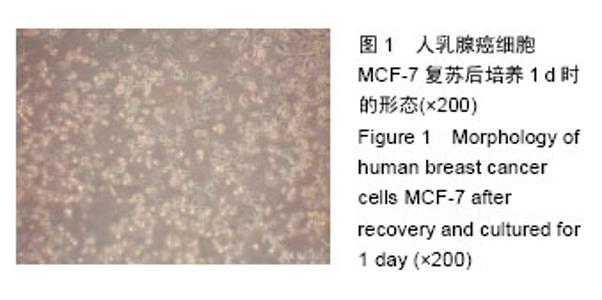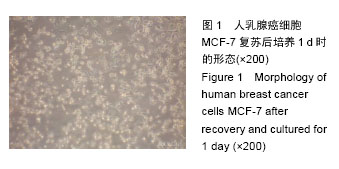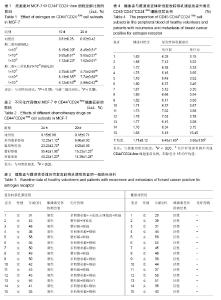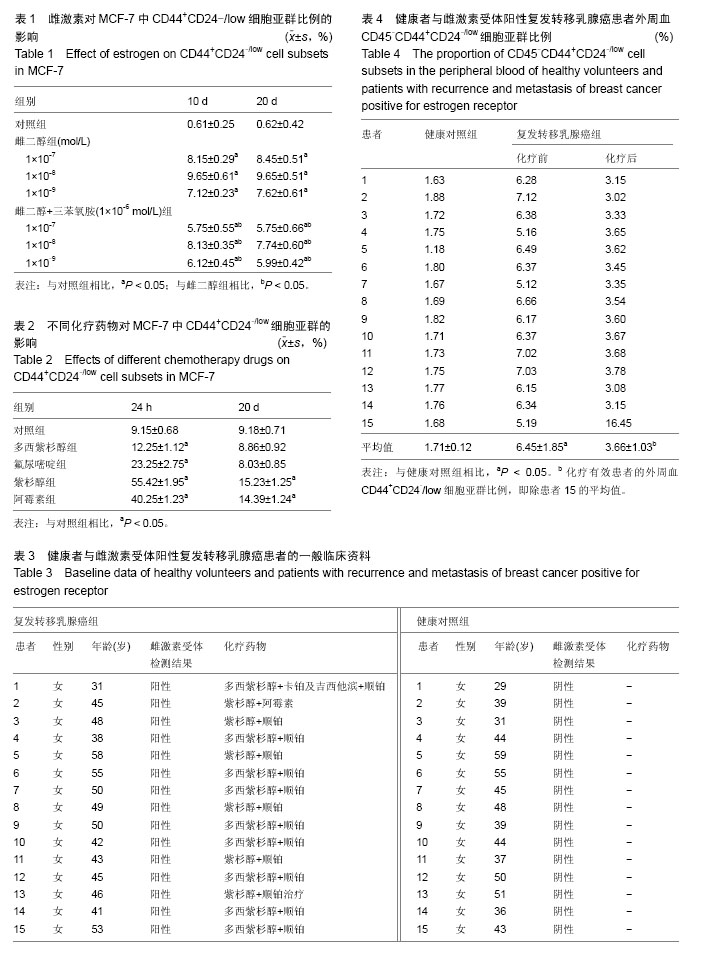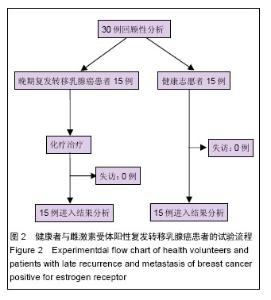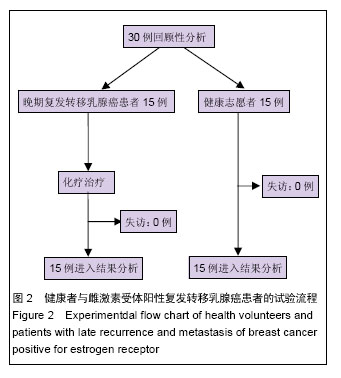| [1] 董华英,吴诚义,陈元文.乳腺癌新辅助化疗后的癌干细胞分离培养[J].第三军医大学学报,2010,32(20):2172-2176.
[2] 肖咏,徐海帆.乳腺癌干细胞及其靶向治疗研究进展[J].现代医药卫生,2014,30(6):856-858.
[3] 董华英,吴诚义,陈元文.化疗后乳腺癌组织中干细胞微球体的分离、培养及鉴定[J].吉林大学学报(医学版),2011, 37(1):163-167,后插4.
[4] 杨帆,许阳子,苏琼菲,等.内分泌及化疗对乳腺肿瘤干细胞的实验研究[J].临床医学工程,2013,20(12):1490-1491.
[5] 盛佳钰,陈红风.乳腺癌的上皮间质转化与多药耐药[C]//第十三届全国中医及中西医结合乳腺病学术年会论文集. 2013:160-164.
[6] 屈洪波,范原铭,韩明利,等.化疗后残存乳腺癌组织中乳腺癌耐药蛋白、P-糖蛋白的表达及其与癌干细胞的相关性[J].中国医学科学院学报,2013,35(2):171-176.
[7] 张霄蓓.乳腺癌干细胞对靶向治疗、化疗及内分泌治疗药物的敏感性研究[D].天津:天津医科大学,2012.
[8] 蒋国勤,袁年勇,何建刚.白杨素逆转乳腺癌干细胞的耐药性实验研究[C]//江苏省第四次乳腺甲状腺内分泌外科学术会议论文集.2009:50-53.
[9] 王俊艳.内分泌及化疗对ER+乳腺癌CD44+CD24+/low细胞亚群的实验与临床研究[D].石家庄:河北医科大学,2011.
[10] Hardt O, Wild S, Oerlecke I, et al. Highly sensitive profiling of CD44+/CD24- breast cancer stem cells by combining global mRNA amplification and next generation sequencing: evidence for a hyperactive PI3K pathway. Cancer Lett. 2012;325(2):165-174.
[11] Singh JK, Simões BM, Clarke RB, et al. Targeting IL-8 signalling to inhibit breast cancer stem cell activity. Expert Opin Ther Targets. 2013;17(11):1235-1241.
[12] 文波,刘红光.乳腺癌干细胞分选方法研究进展[J].肿瘤药学,2013,3(5):335-339.
[13] Rody A, Karn T, Holtrich U, et al. "Stem cell like" breast cancers-a model for the identification of new prognostic/predictive markers in endocrine responsive breast cancer exemplified by Plexin B1. Eur J Obstet Gynecol Reprod Biol. 2008;139(1):11-15.
[14] 谢佳,刘红,余腾骅,等.乳腺癌残存细胞通过表达乳腺癌干细胞样特性促进裸鼠移植瘤的形成[J].第三军医大学学报,2014,36(17):1790-1794.
[15] 李慧慧,徐兵河.乳腺癌干细胞靶向治疗研究进展与展望[J].中华内分泌外科杂志,2014,8(2):89-92.
[16] Buckley NE, Nic An tSaoir CB, Blayney JK, et al. BRCA1 is a key regulator of breast differentiation through activation of Notch signalling with implications for anti-endocrine treatment of breast cancers. Nucleic Acids Res. 2013;41(18):8601-8614.
[17] 邱小兰,甄林林.乳腺癌干细胞研究进展[J].中华内分泌外科杂志,2013,7(5):398-400.
[18] 李治,黄韬,贺艳丽,等.乳腺癌干细胞逃逸化疗机制的研究[J].中华实验外科杂志,2007,24(1):20-21.
[19] Tchokouaha RF, Alexi X, Chosson E, et al. Erymildbraedin A and B, two novel cytotoxic dimethylpyrano-isoflavones from the stem bark of Erythrina mildbraedii: evaluation of their activity toward endocrine cancer cells. J Enzyme Inhib Med Chem. 2010;25(2):228-233.
[20] 郭崇勇,李克,周凌,等.长程多柔比星化疗富集乳腺肿瘤干细胞[J].肿瘤,2012,32(1):27-31.
[21] 易红艳,王薇.肿瘤干细胞在妇科肿瘤的研究进展[J].实用妇产科杂志,2015,31(11):824-827.
[22] 李文鹏,罗维远,徐毅,等.下调 Oct4基因表达对MDA- MB-231乳腺癌干细胞生物学特性的影响[J].中华肿瘤杂志,2015(4):251-257.
[23] 宋文刚,刘春灵,杨旭,等.5-FU对乳腺癌细胞系MDA- MB-468中Bmi-1、Sca-1和Oct-4基因表达的影响[J].临床与实验病理学杂志,2015(5):523-527.
[24] Tanei T, Morimoto K, Shimazu K, et al. Association of breast cancer stem cells identified by aldehyde dehydrogenase 1 expression with resistance to sequential Paclitaxel and epirubicin-based chemotherapy for breast cancers. Clin Cancer Res. 2009;15(12):4234-4241.
[25] 李朋.CD44<'+>CD24<'-/low>乳腺癌干细胞与临床相关性的研究[D].汕头:汕头大学,2009.
[26] 董华英.化疗后乳腺癌组织中的癌干细胞微球体分离培养与鉴定[D].重庆:重庆医科大学,2011.
[27] 许立生,王水,黄中晶,等.CD44+/CD24-/low/ABCG2-乳腺癌干细胞与临床治疗及预后的关系[J].实用医学杂志, 2011, 27(21):3877-3879.
[28] Colleoni M, Sun Z, Martinelli G, et al. The effect of endocrine responsiveness on high-risk breast cancer treated with dose-intensive chemotherapy: results of International Breast Cancer Study Group Trial 15-95 after prolonged follow-up. Ann Oncol. 2009; 20(8): 1344-1351.
[29] Morimoto K, Kim SJ, Tanei T, et al. Stem cell marker aldehyde dehydrogenase 1-positive breast cancers are characterized by negative estrogen receptor, positive human epidermal growth factor receptor type 2, and high Ki67 expression. Cancer Sci. 2009; 100(6): 1062-1068.
[30] Bourguignon LY, Peyrollier K, Xia W, et al. Hyaluronan-CD44 interaction activates stem cell marker Nanog, Stat-3-mediated MDR1 gene expression, and ankyrin-regulated multidrug efflux in breast and ovarian tumor cells. J Biol Chem. 2008; 283(25):17635-17651.
[31] 范原铭,侯婧,董宁,等.人乳腺癌细胞微球体生物学特性研究[J].重庆医学,2015,(4):456-458,461.
[32] 白丽鹏,陈翀,刘妍,等.LIN28B调控miRNAs维持MCF-7肿瘤干细胞的干性特征[J].基础医学与临床,2015,35(6): 754-760. |
